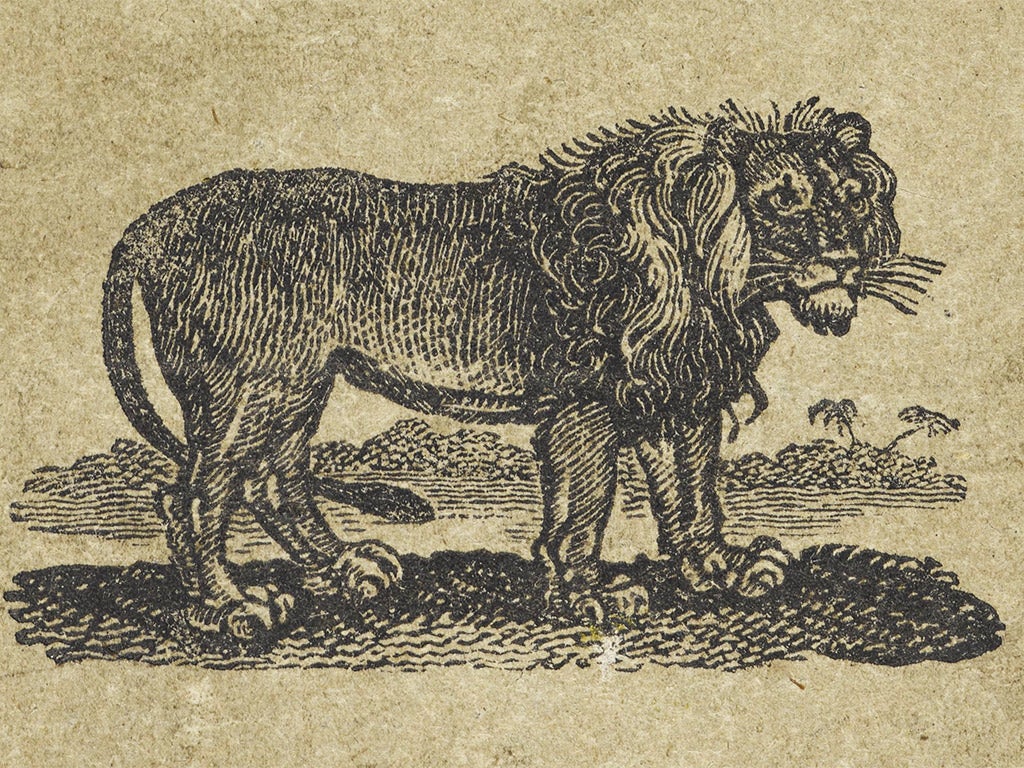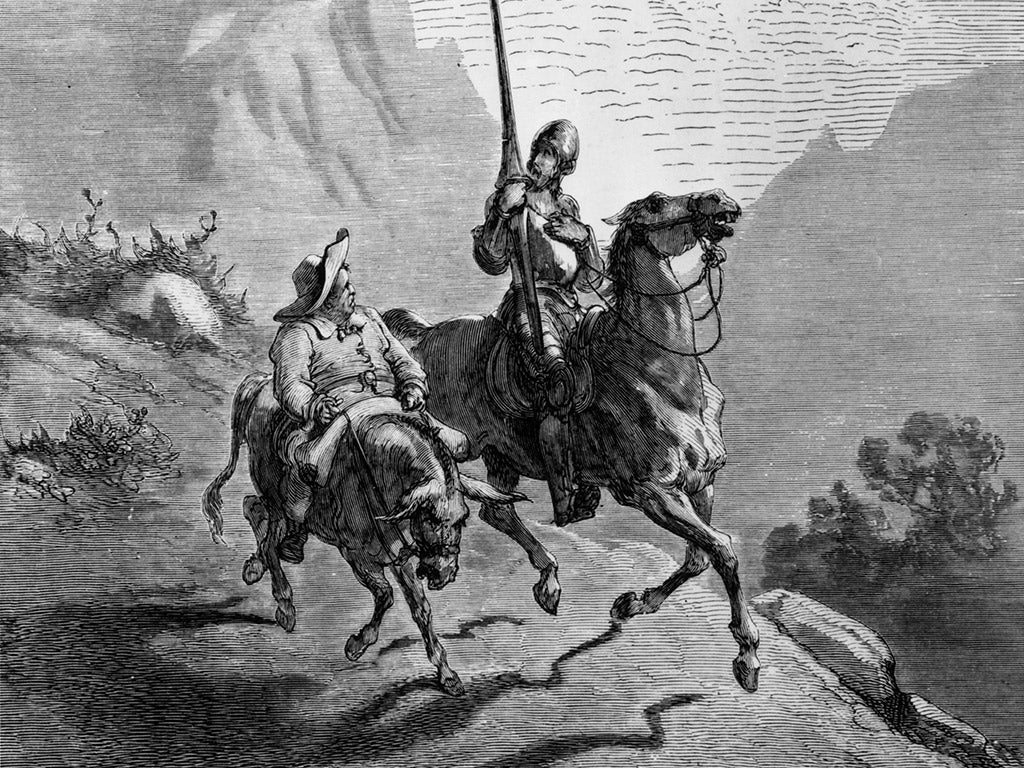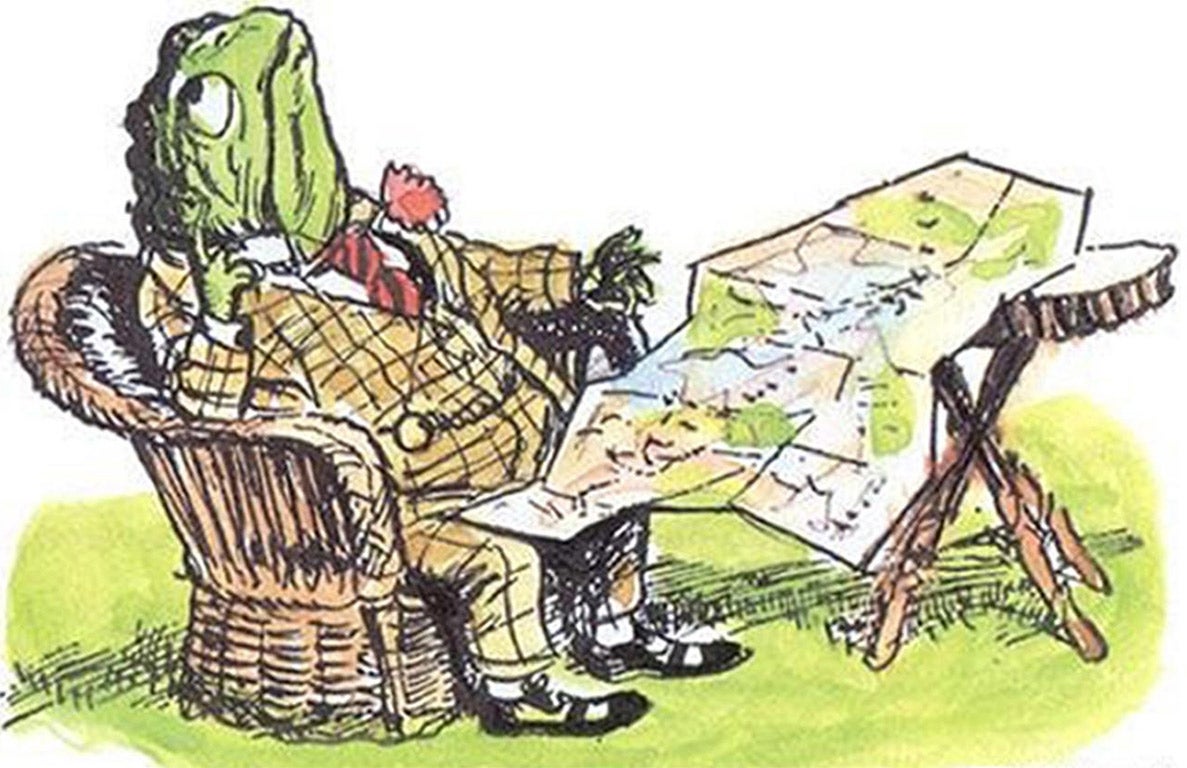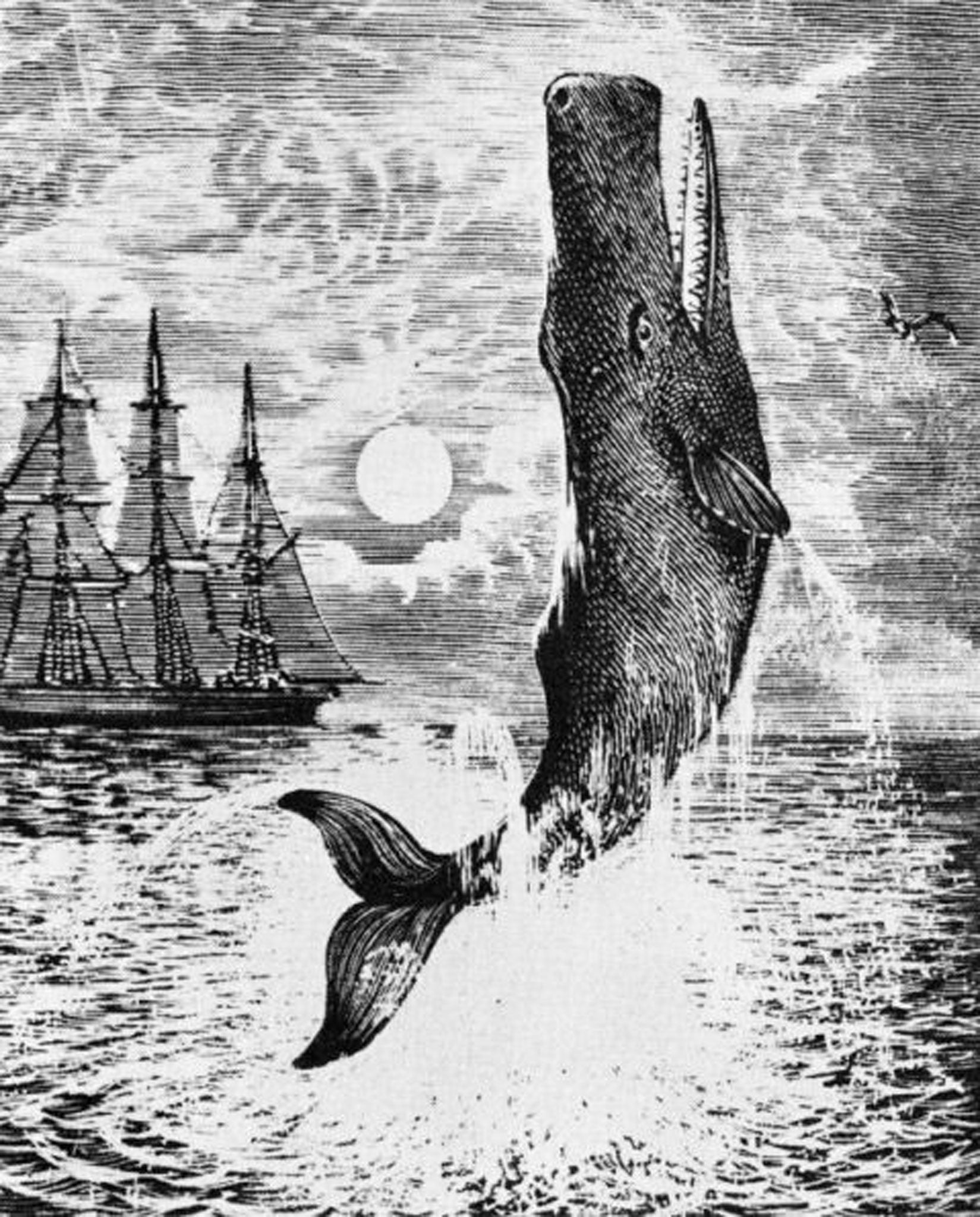British Library's new show Animal Tales celebrates the best beasts in literature
On Friday, a major show about animals in literature opens at the British Library. Here, Boyd Tonkin selects his pet subjects: the most vividly imagined beasts to have lingered in readers' minds through centuries – and even millennia

Your support helps us to tell the story
From reproductive rights to climate change to Big Tech, The Independent is on the ground when the story is developing. Whether it's investigating the financials of Elon Musk's pro-Trump PAC or producing our latest documentary, 'The A Word', which shines a light on the American women fighting for reproductive rights, we know how important it is to parse out the facts from the messaging.
At such a critical moment in US history, we need reporters on the ground. Your donation allows us to keep sending journalists to speak to both sides of the story.
The Independent is trusted by Americans across the entire political spectrum. And unlike many other quality news outlets, we choose not to lock Americans out of our reporting and analysis with paywalls. We believe quality journalism should be available to everyone, paid for by those who can afford it.
Your support makes all the difference.The story of animals in literature is the story of literature itself. The oldest human representation of another species that we know survives in a cave on the Indonesian island of Sulawesi. It depicts a wild pig, painted with skill and flair at least 35,000 years ago. No doubt tales of friendly herbivores, scary carnivores, delicious prey and sacred human-animal hybrids circulated around primeval fires as well. At that pre-alphabetic era, no one could write them down. But once the Akkadian myths of ancient Mesopotamia begin to appear on clay tablets around 4,000 years ago, they include, in the Epic of Atrahasis, a version of the Great Flood – animal rescue and all.
Fast-forward two millennia, and the world's most widely heard story concerns a proud beast wrongly slaughtered by an ignoble hunter: Cecil the Lion. Strip out the new technology, and there's nothing about Cecil's fate that our distant ancestors would not understand. As they stalk a conceptual no-man's-land between familiarity and otherness, by turns companions, enemies, divinities and partners, non-human animals have activated the story-telling gene in every age. This week, the British Library opens an exhibition of "Animal Tales". It rounds up a selection of exhibits from its collections to reveal how writers and illustrators have imagined the beauty – and the mystery – of the beast.
For Matthew Shaw, lead curator of the Library's Americas and Australasia collections, piecing together the items offered not only "the chance to have a rummage" in the BL's treasure trove, "a real treat" in any case. It allowed him to organise a narrative of changing ideas and evolving images, from the earliest folk-tales and beast-fables to the most recent literature – such as Helen Macdonald's soaraway memoir of her rapport with a raptor, H is for Hawk. Shaw also had a more personal reason for his fascination. "Suddenly, I had a nine-month-old baby who was very interested in animals. I thought, has this always been the case?" So far as we can see, it has.
No corner of the globe lacks its animal magic in story-telling form, from ancient China to aboriginal Australia and the pre-Columbian Americas. Stories of other species have always taught humans, young and old, not only about their daily life but more distant states: death, of course, as any pet-owning child or their parent knows, but also transcendence. Animals, says Shaw, "go up into the sky and down into the depths – to the places that we can't go". "Animal Tales" also finds room for the ancient tradition of shape-shifting transitions, injected into the Western literary bloodstream for good by Ovid's epic Metamorphoses.
A fruitful tension between seeing animals as themselves and enlisting them in a philosophical or artistic quest for human nature runs through many genres. We can never know the beast through its own eyes, although many authors try to do just that. "Animal Tales" reminds us that, in the 16th century, the sceptical essayist Michel de Montaigne already wondered whether he was playing with his cat, or his cat with him. More recently, Wittgenstein memorably summarised the gulf between animal "forms of life" and ours: "If a lion could speak, we could not understand him." That goes for the much-mourned Cecil too.
Matthew Shaw was surprised to find how recently the classic line of animal stories for children took shape. This "late blooming", from the late 18th century, may coincide with the industrial and urban revolutions that removed masses of people from daily encounters with animals as the source of labour, livelihood and food. Since then, Shaw suggests, our literary bestiary has often meant "an escape from modernity in some ways", even though many ground-breaking writers – from Franz Kafka and Guillaume Apollinaire to Ted Hughes, Angela Carter and Mark Doty – have saluted the beast within, and without.
Mythical, sacred or bristlingly real, the wild and the tame, literary animals will welcome visitors to the British Library until the start of November. To celebrate, I have chosen a few favourite written beasts – some of which you will also find in the BL gallery. With such a vast menagerie of tales, many much-loved species can boast scores, if not hundreds of classic "characters". I have picked one work for each animal. You will have your own pet texts. This ark need have no limits.
Dog: Homer, The Odyssey
At the fountainhead of Western epic poetry stands the godfather of every faithful hound. Odysseus's dog Argos has waited for his long-lost master to return from Troy. Now infirm, Argos recognises the wanderer, but the disguised homecomer cannot acknowledge him. So "just then death darkened the eyes of Argos, who had seen Odysseus again after 20 years".
Horse: Cervantes, Don Quixote
Like his whimsical rider, the ageing knight's trusty steed is knackered, clumsy, over-the-hill. Yet Rocinante shares the stout heart and never-say-die attitude of the Don himself, bravely bearing him to adventures as "the first and foremost of all hacks in the world". Given half a chance, he also chases the fillies.

Pig: PG Wodehouse, Blandings Castle and Elsewhere
Serial victor in the "Fat Pig" class at the Shropshire Show, the mighty white sow Empress of Blandings enjoyed a 50-year trot through the Wodehouse canon. Lord Emsworth's favourite female not only mothered a litter of outlandish plots but has recently lent her imperial title to a Hampshire pub.
Donkey: Cornelius Medvei, Caroline: A Mystery
This gem of a novel from 2011 proves that the classic beast-fable is alive and kicking. From Apuleius (The Golden Ass) to Robert Louis Stevenson, donkeys and asses tend to get the respect in literature that unkind life denies them. Medvei's chess-playing good companion belongs with her greatest forebears.
Cat: Haruki Murakami, Kafka on the Shore
Enigmatic, talkative felines stalk Murakanmi's fiction, the source of wisdom, mystery and enlightenment. Although one strand of his 2002 novel sends the cat-finder Mr Nakata in search of the strayed Goma, many felines – from the smart Siamese Mimi to the veteran Otsuka – have their idiosyncratic say.
Rat: Gunter Grass, The Rat
In the year of Chernobyl, Germany's maverick literary conscience speculated – as apocalyptic fiction often has – that the rats will inherit the earth. His "ratess" instructs her human keeper about the fate of the poisoned planet and so – as utopia vies with dystopia – goads him to imagine a better future.
Mouse: Beatrix Potter, The Tale of Two Bad Mice
Don't get trapped by those mice-as-helpless-victims clichés. In 1904, Miss Potter transformed her rebellious streak into the story of a pair of hooligan Mus musculi who vandalise a twee doll's house. Her words and pictures convey an almost anarchic relish in domestic mayhem and upheaval. These mice roar.
Rabbit: Lewis Carroll, Alice's Adventures in Wonderland
"Oh my ears and whiskers, how late it's getting!" So what? Chill out, bunny babe. Carroll's genius with animals lay in a subversive re-purposing of stereotypes. Here, traditional timidity becomes more sinister: a mid-Victorian bourgeois conformity that Alice learns to avoid. The White Rabbit's pocket-watch says it all.
Badger: John Clare, The Badger
In the early 19th century, the "peasant poet" emptied the Romantic menagerie of its symbolic beasts and wrote instead about realistic creatures as fellow-strugglers in rural life. His verse account of a badger-hunt can still appal, down to its bloody finale when "kicked and torn and beaten out he lies/ And leaves his hold and cackles, groans, and dies."
Fox: David Garnett, Lady into Fox
In 1922, a decade after Kafka's Metamorphosis, the ancient terror of a sudden species-change inspired one of the Bloomsbury Group's most powerful fictional experiments. A young wife's transformation results in authentic vixen-like behaviour, observed by her husband with the sort of deadpan lucidity that intensifies the menace of the parable.
Bee: Laline Paull, The Bees
Since Virgil's Georgics, 2,000 years ago, hive behaviour has proved a bottomless honey-pot for writers in search of allegorical accounts of social life. The theme has never lost its buzz, but in 2014 Laline Paull's debut indicated, via the upwardly mobile career of Flora 717, that modern environmental crisis can lend it a fresh sting.
Snail: Elizabeth Bishop, Giant Snail
When animals returned to Modernist verse, they frequently did so in unglamorous guises. In Bishop's poems, often inspired by her 15 years in tropical Brazil, lonely and ungainly creatures suffer species-defined setbacks but also convey a universal plight. Clumsy, solitary, "heavy, heavy, heavy", her outsize snail finds life an endless trial: "Withdrawal is always best."
Toad: Kenneth Grahame, The Wind in the Willows
Surely the weasels have failed and Mr Toad still lives in the Hall. Grahame's portrait of the over-entitled Englishman shrewdly sees that an amphibious nature – with its ability to adapt and survive – protects the smug, impulsive toff. Chaps like him will get away with, if not murder, then a string of motoring infractions.

Crow: Ted Hughes, Crow
In 1970, Hughes's "life and songs" of the divine, demonic bird lifted to the heights a poetic career that always blended the symbolic role of creatures with an insistence on their separateness. His Crow snaps up pantheons of human gods and myths in the face of looming catastrophe, but ultimately flies only "the black flag of himself".
Otter: Henry Williamson, Tarka the Otter
By the 1920s, the prestige of natural history had encouraged many writers to imagine more zoologically credible creatures, rather than human archetypes in furry robes. In Tarka's battles with the Devon otter-hunt, Williamson proved a pioneer of sentiment-free narrative – although his far-right sympathies hint at a more troubling side to the "green" heritage.
Bear: Philip Pullman, His Dark Materials trilogy
With their handy thumbs and armour, Pullman's metal-working panserbjorne may slip over the edge from sentient actual species into fantastic creatures – a distinct literary category. Yet Iorek Byrnison, the royal bear of Svalbard, shows in his exile how the noblest beasts of fiction often take shape through a creative alloy of zoology and mythology.
Kestrel: Barry Hines, A Kestrel for a Knave
With its allusion to a medieval poem, Hines's classroom favourite grasps that birds of prey and class division go hand-in-glove in Britain. The avian avatar that lets young Billy fly away from his mining town has an ancient symbolic plumage. This bird belongs as well to 1968, when so many hopes took flight.
Lion: The Book of Daniel
Later than the rest of the Old Testament, the tales of Daniel belong to the same Hellenistic world as Aesop's Fables. Beasts deliver a moral verdict, and lions with a hotline to the Almighty may judge men. Unscathed in their den, the falsely accused hero can say that "My God hath sent his angels, and hath shut the lions' mouths".
Tiger: Rudyard Kipling, The Jungle Books
Lame, vain, disrespected, Shere Kahn is a wounded emperor, scorned as "all long tail and loud talk". If, in 1894, Kipling knew that jungle beasts may hold a mirror up to power, then he stood in an ancient Indian line. Influential in Asia, the Middle East and Europe, the animal fables of the Panchatantra date to c.200BC.
Elephant: Barbara Gowdy, The White Bone
A stalwart of the Indian classics, the elephant treads down the centuries to general applause, pachydermously resistant to the changing fortunes of other beasts. But in Gowdy's remarkable novel (1998), the young cow Mud must negotiate selfish as well as noble conduct in the She-S clan. The elephant characterisation draws its strength from research into the African herd life.
Whale: Herman Melville, Moby Dick
Hunted since 1851 by fleets of interpreters, Melville's great white monster has come to stand for nothing less than meaning, or destiny, or literature itself. His elusive leviathan has swallowed a library. Yet this is also, in delirious profusion, a novel about whalers and whaling, crammed with cetacean expertise and seafaring lore gleaned from old Nantucket salts.

Monkey: Wu Cheng'En, Journey to the West
Resourceful, impetuous, Sun Wukong stands apart from other beastly heroes: he can transform himself into other creatures. Both a support and a hindrance to the band of pilgrims from China in the Ming Dynasty epic, Monkey still clambers with agility from medium to medium – most recently, as a TV star in the Japanese series.
Wolf: Angela Carter, The Bloody Chamber
Carter's Gothic menagerie of stories proves in every tooth and claw how modern notions of sexuality and selfhood can enrich the traditional bestiary. At the dark heart of her collection lies "The Company of Wolves". The "carnivore incarnate" pads into the picture in a howlingly realistic shape, before mutating into the charismatic protagonist of Red Riding Hood-type tales.
Camel: Ibrahim al-Koni, Gold Dust
A Tuareg master-storyteller from Libya, al-Koni gave the much-insulted ruminant its due in this tender, mystical novel of a chieftain's son and his bond with an adored camel. A tribal sheikh says that the thoroughbred Mahri is always "a mirror of its rider". Ukhayyad and his mount become inseparable. Yet their kinship leads to tragedy…
Chimpanzee: James Lever, Me Cheeta
Booker Prize long-listed, Lever's clever and hilarious "celebrity memoir" makes up for the woeful lack, so far, of non-human autobiographies. Co-star of the 1930s Tarzan movies with Johnny Weissmuller, Cheeta the Chimp delivers a tell-all swing through Hollywood scandal – not only a Swift-like satire on Tinseltown, but a hominid cousin's mocking perspective on human folly.
'Animal Tales' is at the British Library, 96 Euston Road, London NW1 2DB, from 7 August to 1 November; admission free
Join our commenting forum
Join thought-provoking conversations, follow other Independent readers and see their replies
Comments